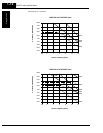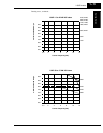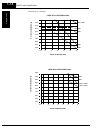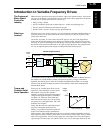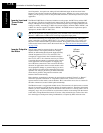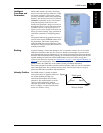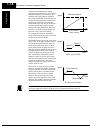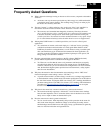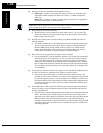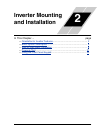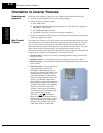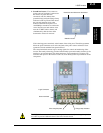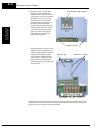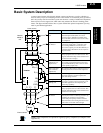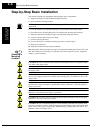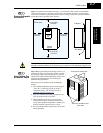
Frequently Asked Questions
Geting Started
1–20
Q. What type of motor is compatible with the Hitachi inverters?
A. Motor type – It must be a three phase AC induction motor. Use an inverter-grade
motor that has 800V insulation for 200V class inverters, or 1600V insulation for
400V class.
Motor size – In practice, it’s better to find the right size motor for your application;
then look for the inverter to match the motor.
NOTE: There may be other factors that will affect motor selection, including heat dissipation,
motor operating speed profile, enclosure type, and cooling method.
Q. How many poles should the motor have?
A. Hitachi inverters can be configured to operate motors with 2, 4, 6, or 8 poles. The
greater the number of poles, the slower the top motor speed will be, but it will have
higher torque at the base speed.
Q. Will I be able to add dynamic (resistive) braking to my Hitachi L300P drive after the
initial installation?
A. Yes. Models L300P-110xxx and L300P-150xxx have built-in dynamic braking units.
You can add an external resistor to these models to improve braking performance.
Models L300P-185xxx through L300P-1320xxx require you to add an external
braking unit. The braking resistor connects to the external braking unit for those
models. More information on dynamic braking is located in Chapter 5.
Q. How will I know if my application will require resistive braking?
A. For new applications, it may be difficult to tell before you actually test a motor/drive
solution. In general, some applications can rely on system losses such as friction to
serve as the decelerating force, or otherwise can tolerate a long decel time. These
applications will not need dynamic braking. However, applications with a combina-
tion of a high-inertia load and a required short decel time will need dynamic braking.
This is a physics question that may be answered either empirically or through exten-
sive calculations.
Q. Several options related to electrical noise suppression are available for the Hitachi invert-
ers. How can I know if my application will require any of these options?
A. The purpose of these noise filters is to reduce the inverter electrical noise so the
operation of nearby electrical devices is not affected. Some applications are governed
by particular regulatory agencies, and noise suppression is mandatory. In those cases,
the inverter must have the corresponding noise filter installed. Other applications may
not need noise suppression, unless you notice electrical interference with the opera-
tion of other devices.
Q. The L300P features a PID loop feature. PID loops are usually associated with chemical
processes, heating, or process industries in general. How could the PID loop feature be
useful in my application?
A. You will need to determine the particular main variable in your application the motor
affects. That is the process variable (PV) for the motor. Over time, a faster motor
speed will cause a faster change in the PV than a slow motor speed will. By using the
PID loop feature, the inverter commands the motor to run at the optimal speed
required to maintain the PV at the desired value for current conditions. Using the PID
loop feature will require an additional sensor and other wiring, and is considered an
advanced application.



